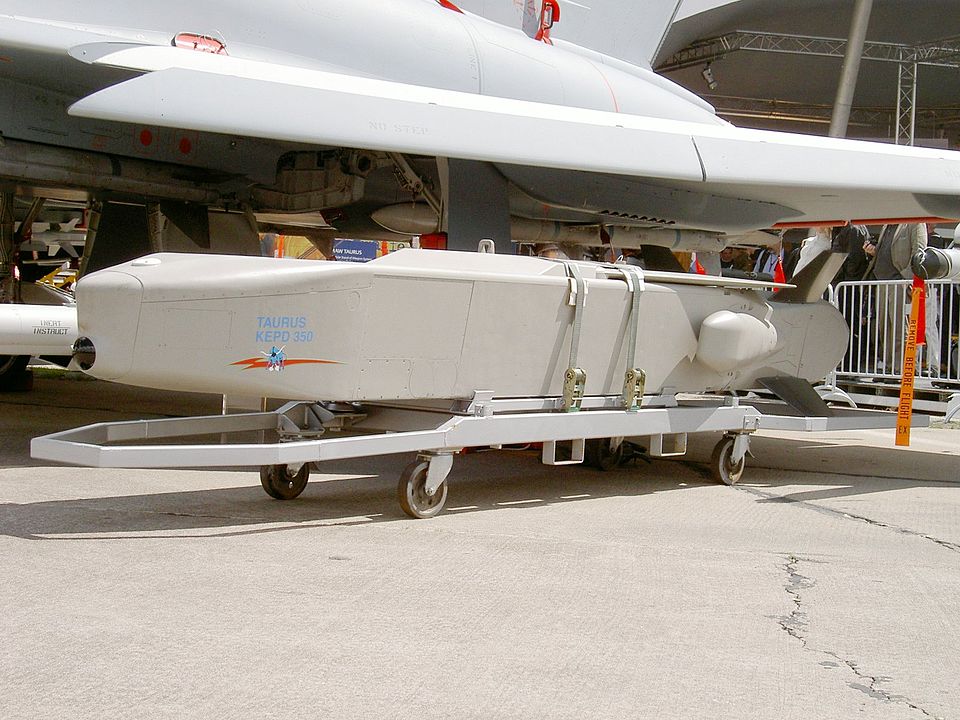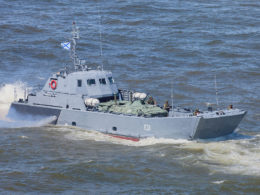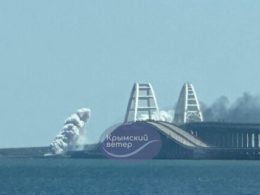At least five powerful explosions rocked the Russian-occupied city of Sevastopol in Crimea on Tuesday, 31 January, according to local residents and monitors. The blasts targeted the Belbek airfield, home to Russian military aircraft and the radio center of the headquarters of the entire Russian Black Sea Fleet aviation.
They are part of a Ukrainian campaign to degrade Russia's ability to use the occupied peninsula as a base for operations in southern Ukraine.
“Ukrainian aviation will definitely return home to its native airfield,” said Ukrainian Air Force commander Mykola Oleshchuk in a statement confirming the attack conducted on the 204th Sevastopol Tactical Aviation Brigade. He thanked all who participated in “cleansing Crimea” of Russian occupation.
https://twitter.com/EuromaidanPress/status/1753009367928967361
The strike was most likely made with British/French Storm Shadow/SCALP missiles, which were repeatedly used to attack military objects in Crimea, as per Defense Express.
A spokeswoman for Ukraine's military, Nataliya Humeniuk, stated on air of the national telethon the next day that Russians acknowledged that five missiles hit the airfield, and hinted that aircraft were hit in the strike, saying that the Russians did not manage to disperse the aircraft prior to the strike.
However, Defense Express doubts that airplanes were damaged, as the warheads of Storm Shadow/SCALP missiles are intended to strike protected underground facilities. The defense outlet notes that, most likely, the missiles hit the underground command point of the radio center of the HQ of Russia's Black Sea Fleet aviation.
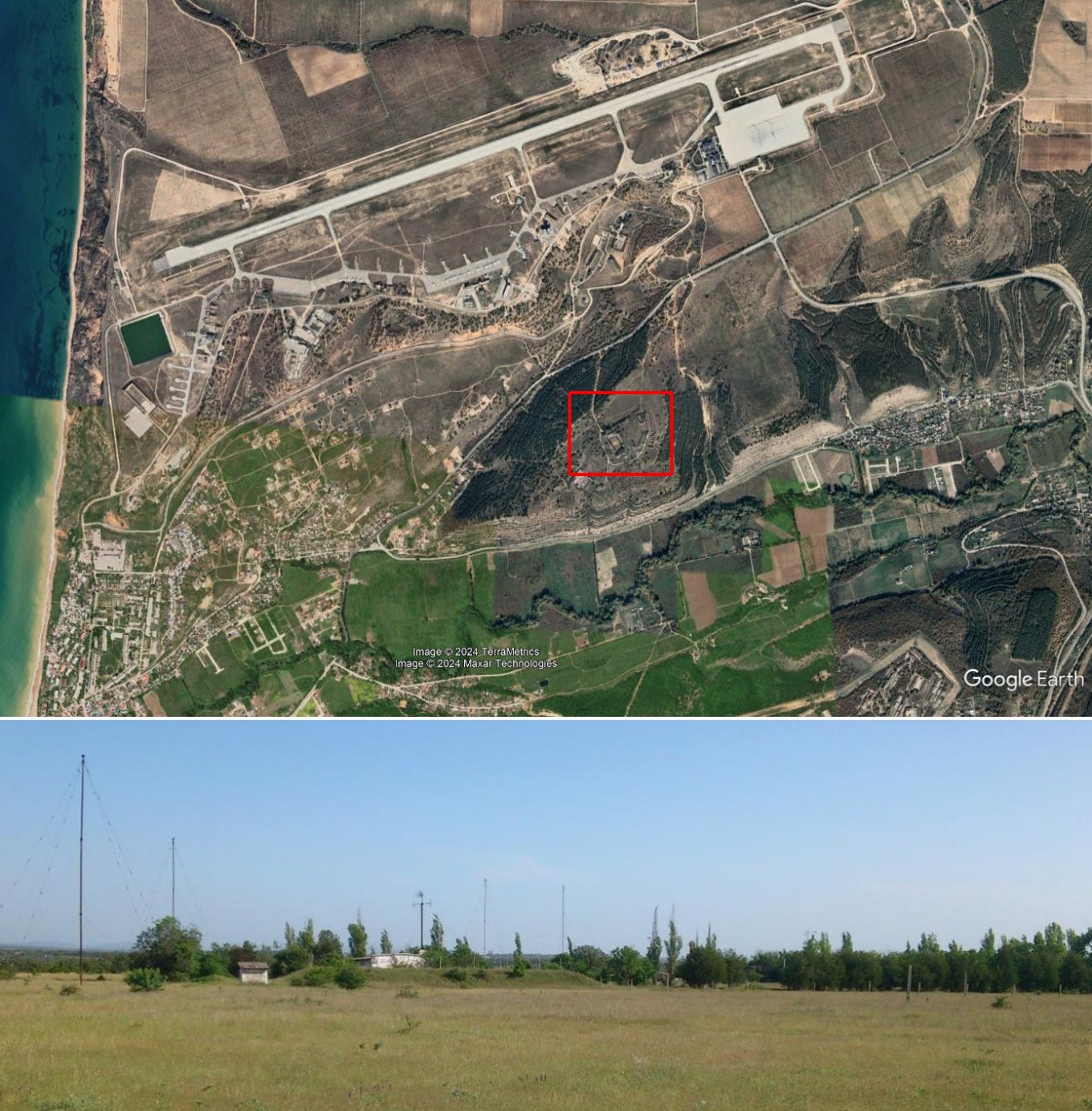
Videos circulating on local Telegram channels showed thick plumes of smoke rising from the vicinity of the airfield as locals described a fire at the airfield.
At 18:39 Moscow time, Russia's Defense Ministry claimed 17 Ukrainian missiles were shot down over the Black Sea and three more over Crimea. Debris fell near the village of Lyubimovka, site of the Belbek airbase, the ministry said, but claimed Russian planes were undamaged.
Earlier in the day, explosions had been reported near Sevastopol, Saky, Feodosia, Razdolne, and Hvardiiske. Occupation authorities declared an air raid alert and closed the Kerch Strait Bridge to traffic.
OSINT analysts: radiolocation station was hit at Belbek airbase
However, the Russian Telegram channel Astra reported that the attack struck a communications center at military unit 80159. The communications center caught fire over an area of about 30 square meters. There were reportedly no casualties.
A local Telegram channel called Krymskyi Veter (Crimean Wind) reported, after gathering information from its followers, the coordinates of the attack, and claimed that a radiolocation station was destroyed in the attack, that part of a cliff next to the runway broke off from the shockwave, and the vehicle fleet was also hit.
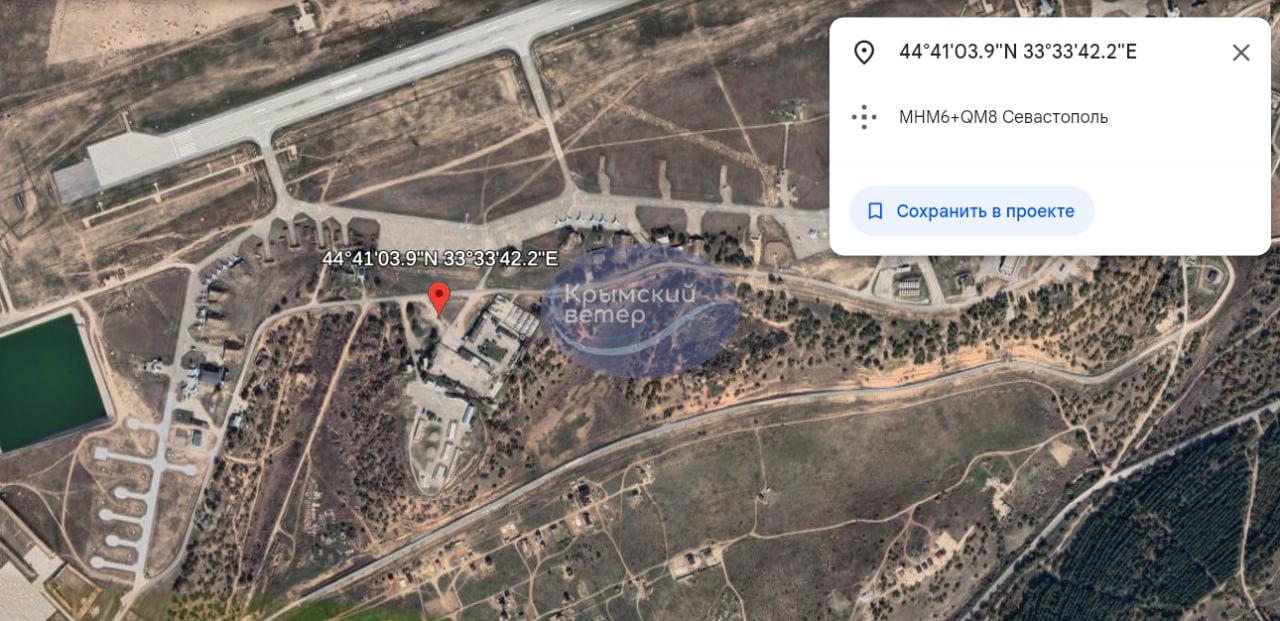
Indirectly confirming the strike on the radiolocation station, Sevastopol's occupation governor Mikhail Razvozhzhaev stated that houses in a neighborhood located roughly 300 meters from the probable impact site were damaged, Krymskyi Veter added.
OSINT investigator @Dmojavensis reported, having analyzed the light/sound of the footage of the explosion, that the coordinates of the strike were either 44.67643, 33.55323 or 44.66882, 33.55127.
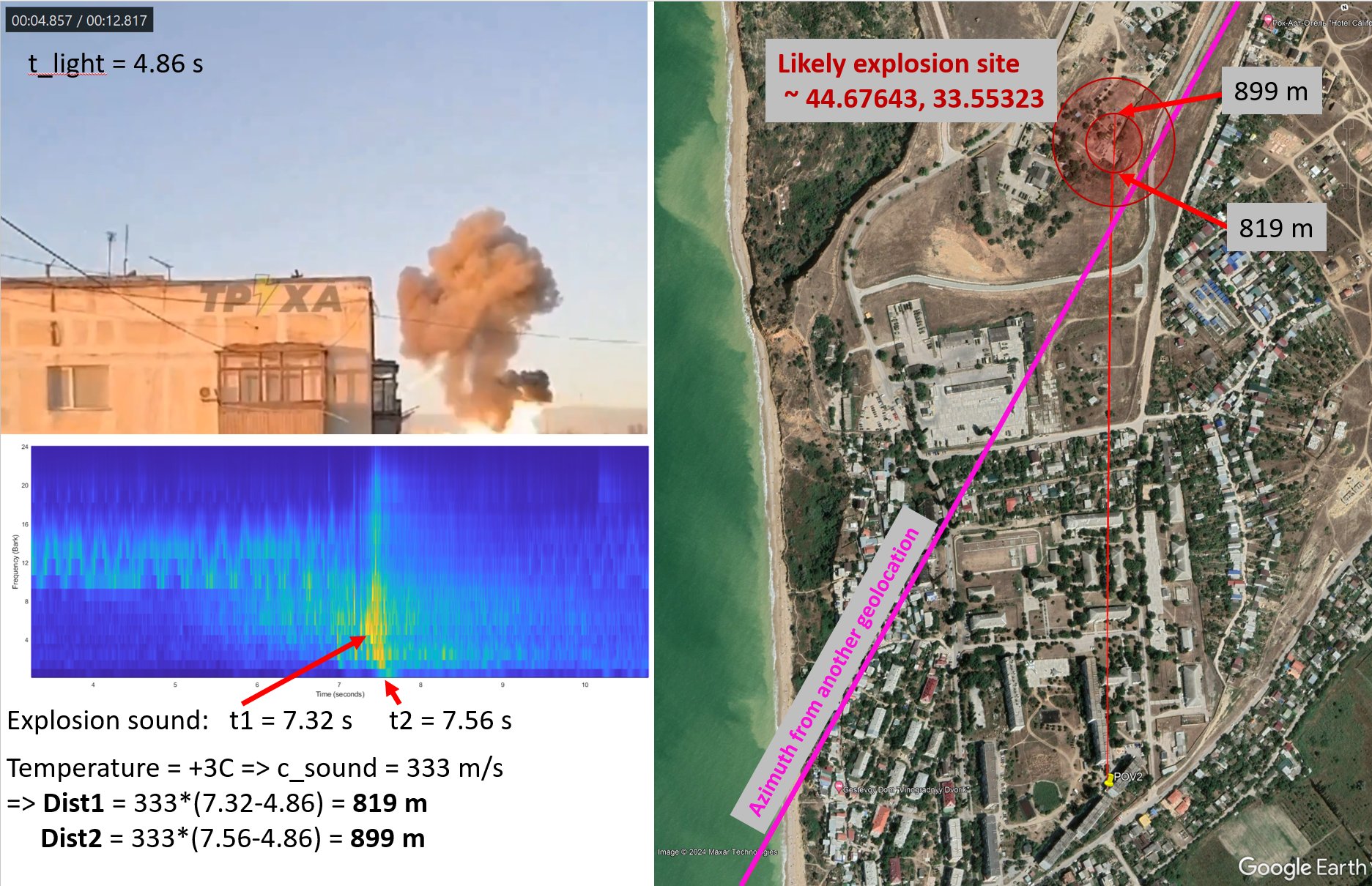
Another OSINT investigation account Radio and Nukes
reported that it was "55-80% likely" that the target of the Ukrainian strike was an air defense radar command post/network node.
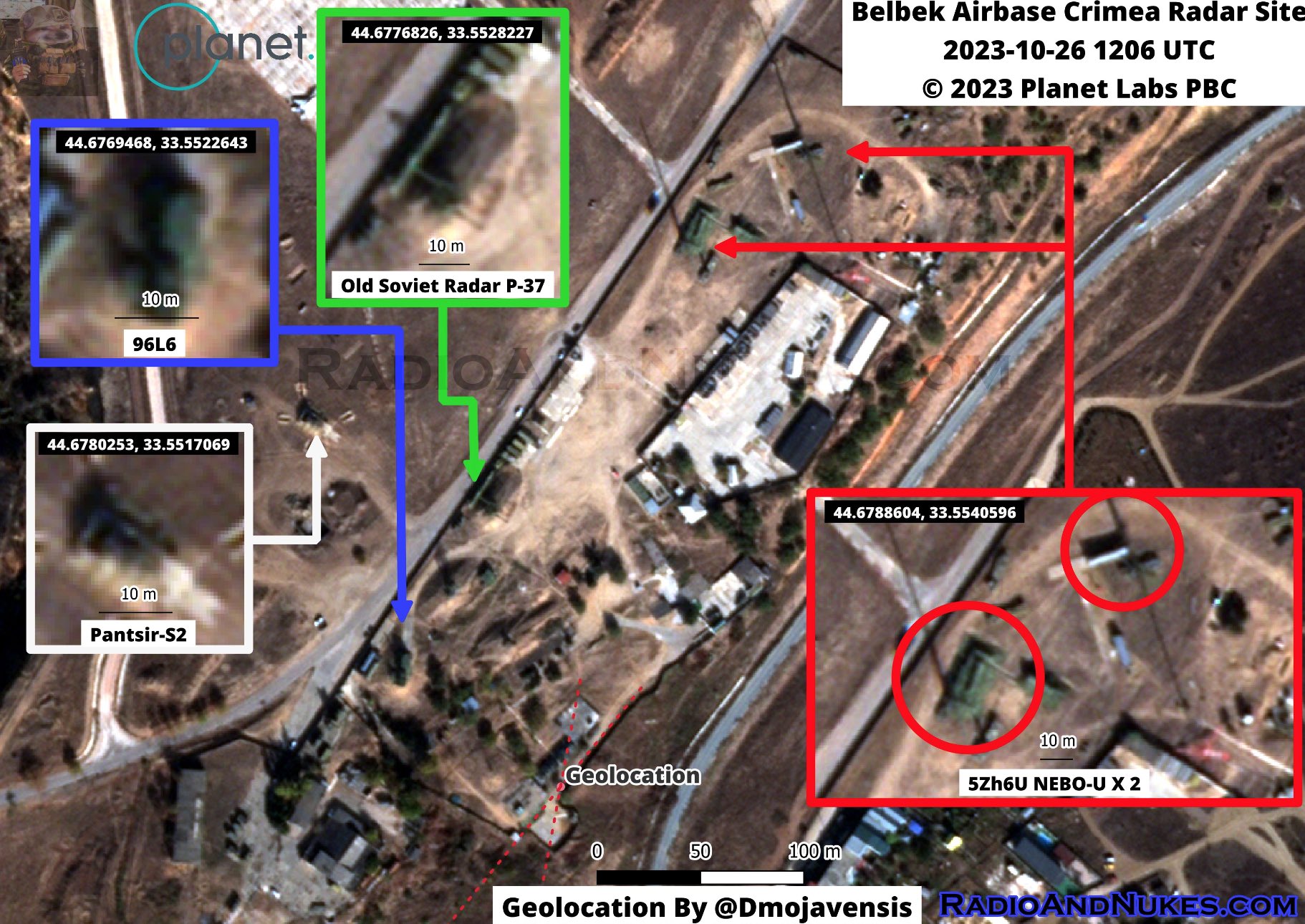
Radio and Nukes estimates that the radar site contains two 5Zh6U NEBO-U VHF Early warning radars, one 96L6 Acquisition radar of the S-300/400 system or stand alone, one Pantsir-S2 Air short range defense system, and RSP-27 Approach radar used to help aircraft land.

Ukrainian OSINTer Dnipro OSINT also geolocated the strike and concluded that it destroyed the underground command point of the main radar station at Belbek. His coordinates of the strike are 44.676684946980856, 33.55270148866832.
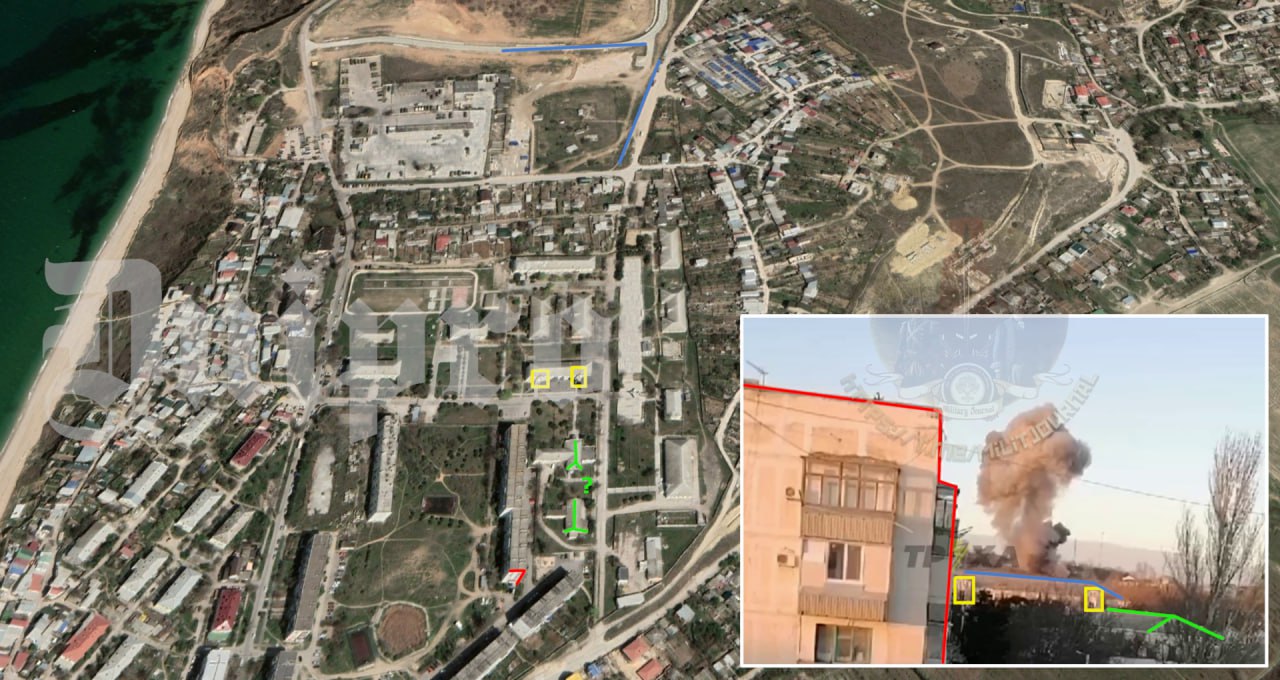
Defense Express notes that reports of a landslide after the strike, confirmed e.g. in Krymvsky Veter's report about a cliff breaking away, point to an underground explosion, making it likely that the missiles indeed struck the Russian underground command point.
The outlet also notes reports of radar stations being destroyed, stating that Russia kept expensive Nebo radar systems there.
Significance of Ukrainian strike on Belbek
Spokesman for the Air Force Command of the Armed Forces of Ukraine Yurii Ihnat said on air of Espreso.TV that the Russian aircraft likely based at Belbek airfield in occupied Crimea that was attacked on 31 January included enemy Su-27, MiG-29, and Su-30 jets.
Ignat said that possibly, it also contains MiG-31BM aircraft, which carry missiles like the R-37 that threaten Ukrainian aircraft and helicopters in the south.
He added that the airfield is actively used by the Russians as one of the main bases in Crimea since the start of the full-scale invasion and is one of five such bases.
Ihnat noted it's too early to talk about the results of the strike until confirmation of Russia's losses. But infrastructure destruction reduces Russia's capabilities in the seas to strike Ukraine, he said.
Ukraine can now systematically and regularly strike to degrade Russia's combat capabilities, as it has some tools, Ignat said. But more strike weapons and aircraft from partners are needed to increase these capabilities, he added.
The Institute for Study of War reminds that Ukrainian forces recently repeatedly targeted the Saky airfield, located north of Sevastopol, as part of a multi-day strike campaign against Russian targets in occupied Crimea in early January 2024. A command post was reportedly damaged during the Saky strike.
In the summer of 2023, Ukraine conducted a strike campaign against Russian military infrastructure and Black Sea Fleet out of the western part of the Black Sea, aiming to degrade the Russian military’s ability to use Crimea as a staging and rear area for defensive operations in southern Ukraine.
Related:


